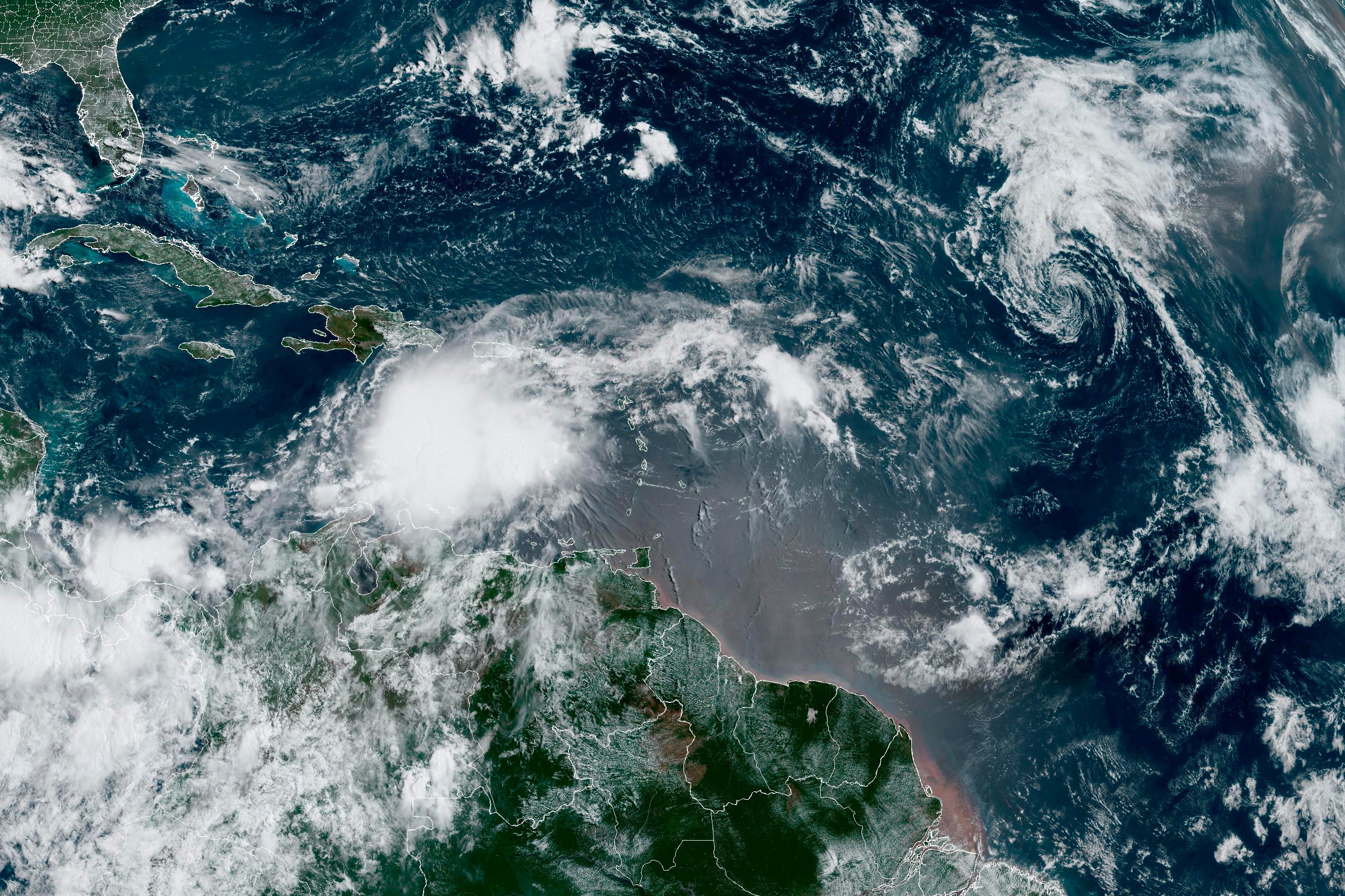Tropical Storm Franklin nears Haiti and Dominican Republic as countries on path brace for floods
Tropical Storm Franklin is churning through the Caribbean Sea as authorities in Haiti and the Dominican Republic warn residents to prepare for floods and landslides

Tropical Storm Franklin churned through the Caribbean Sea on Monday as authorities in Haiti and the Dominican Republic warned residents to prepare for floods and landslides.
The storm was located some 240 miles (390 kilometers) south of Santo Domingo, the capital of the Dominican Republic and had maximum sustained winds of 50 mph (85 kph). It was moving west at 6 mph (9 kph) and was forecast to make a sharp turn north late Monday or early Tuesday.
Franklin is expected to strengthen before making landfall late Tuesday in Hispaniola, the island shared by Haiti and the Dominican Republic. The storm is forecast to drop up to 10 inches (25 centimeters) of rain in both countries, with up to 15 inches (38 centimeters) in isolated areas. Heavy rainfall is of great concern to Haiti, given that the country floods easily in many places due to severe erosion. More than 40 people died in June following a day of heavy rain from a thunderstorm.
“The mudlslide risk there is just awful,” said Phil Klotzbach, a meteorologist at Colorado State University, noting that a slow-moving storm poses great danger in Haiti given that it's so stripped of trees.
A tropical storm warning was in effect for the entire southern coasts of the Dominican Republic and Haiti, which share the island of Hispaniola.
A tropical storm watch was in effect for the Turks and Caicos Islands.
Earlier Monday, there were three tropical storms swirling through the Caribbean and Atlantic Ocean, an unusual occurrence as the region braces for a busier than average hurricane season.
“We went from nothing to a lot in a day,” Klotzbach said.
One of those storms, Emily, dissipated late Monday morning, and another storm, Gert, was expected to do the same soon.
Franklin formed on Sunday and was dropping heavy rain over parts of Puerto Rico on Monday, Meanwhile, Gert formed overnight to become the eighth named storm of the Atlantic hurricane season. It formed some three weeks early compared with the dates of the eighth named storms from 1991 to 2020, said Brian McNoldy, senior research associated at University of Miami.
While there have been 14 years with three named storms simultaneously in the Atlantic starting in 1886, Klotzbach said the most storms the Atlantic has ever had at one time is four, a phenomena that has occurred only twice, in 1893 and 1995.
The Atlantic is smaller than the Pacific and can only accommodate so many storms, he said, adding that Franklin is shearing apart Gert.
“One will basically kill the other one,” he said of storms that are too close to each other.
Meanwhile, a fourth system in the Gulf of Mexico was expected to soon become a tropical storm, as was a system off the coast of western Africa.
“We expected an active season,” said Odalis Martínez, a meteorologist with the National Weather Service in Puerto Rico. “It’s not surprising that we have several active storms.”
On Aug. 10, the National Ocean and Atmospheric Administration updated its forecast and warned that this year’s hurricane season would be above normal.
Between 14 to 21 named storms are forecast. Of those, six to 11 could become hurricanes, with two to five of them possibly becoming major hurricanes, according to NOAA.
The Atlantic hurricane season runs from June 1 to Nov. 30.
Bookmark popover
Removed from bookmarks